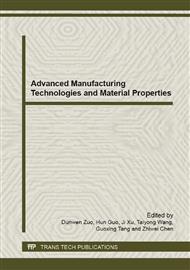[1]
F. Xiao, J.Q. Zhang and H.L. Tu, Electric Vehicles, Metallurgical Industry Press, Beijing (2002).
Google Scholar
[2]
N. Kawabata, M. Komada and T. Yoshioka, Noise and Vibration Reduction Technology in the Development of Hybrid Luxury Sedan with Series/Parallel System, SAE International paper, 1(2007) 22-32.
DOI: 10.4271/2007-01-2232
Google Scholar
[3]
J. L. Stout, M.H. Chien and G. Rahimo. NVH Design and Development of the Duratec35 Engine from Ford Motor Company, SAE International paper, 1(2007)241-245.
DOI: 10.4271/2007-01-2414
Google Scholar
[4]
J. Pang, G. Chen and H. He. Automotive Noise and Vibration. Beijing Institute of Technology Press, Beijing (2006).
Google Scholar
[5]
G. K, W. Thomas. Aspects of NVH Integration in Hybrid Vehicles. SAE International paper, 1(2009)208-213.
Google Scholar
[6]
K. Masashi, Y. Takayoshi. Noise and Vibration Reduction Technology in New Generation Hybrid Vehicle Development. SAE International paper, 1(2005)229-233.
Google Scholar
[7]
J. Lin. Noise and Vibration Reduction Technology in New Generation Hybrid Vehicle. Automobile & Parts Technology, (14)(2006)30-33.
Google Scholar
[8]
L.J. Zhang, Y. Ye, Z.P. Yu. Experimental Investigation into Starting Noise and Vibration of an Engine Used in Hybrid Electric Vehicle. Automobile Technology, (3)(2009)28-31.
Google Scholar
[9]
H. Lee, D. Park, S. Hong. Development of noise and vibration prediction software in medium-to-high frequency ranges using power flow boundary element method. SAE International paper, 1(2003)145-153.
DOI: 10.4271/2003-01-1458
Google Scholar
[10]
M. Schneider, H. Lahey, Christoph Steffens and Hans-Dieter Sonntag. CAE process to eliminate powertrain noise and vibration. SAE International paper, 1(2002)45-54.
DOI: 10.4271/2002-01-0459
Google Scholar
[11]
A.M. Wang, N. Vlahopoulos. Vehicle NVH Analysis Using EFEA & EBEA Methods. SAE International paper, 1(2009)76-82.
DOI: 10.4271/2009-01-0766
Google Scholar
[12]
D.P. Yue, Y. Wu, T. Wang. The Influence of Electromagnetism on Vibration and Noise for Mild Hybrid System. Vehicle Engine, (10)(2010)69-72.
Google Scholar


